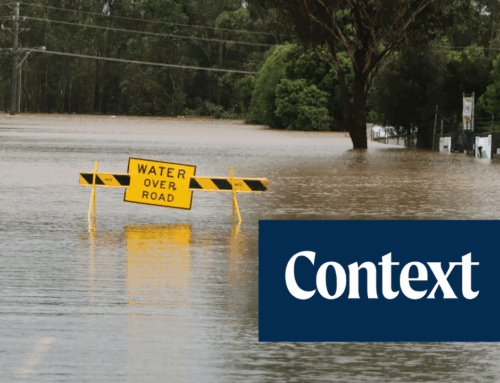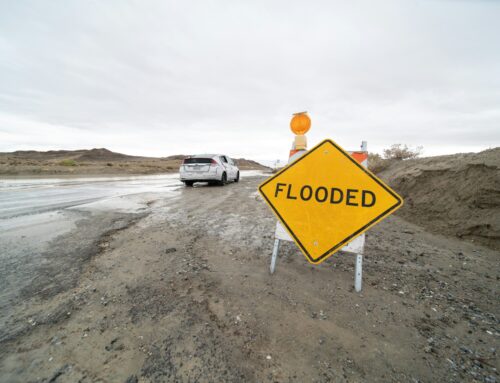The recent wildfires in California once again cast light on the increasing harms resulting from climate change. It’s not just wildfires — catastrophic floods, hurricanes, and droughts are more destructive because of climate change. The increasing intensity of natural disasters results not just in devastating losses for individual and communities, but mounting financial costs, almost all of which are borne by taxpayers.
The growth in the cost of disasters in recent decades is staggering. Presidential disaster declarations (which triggers the flow of federal funds) have tripled since the 1960s. Responding events in 2017, lawmakers appropriated $120 billion to respond to disasters — far more discretionary appropriations than any federal department other than what the Pentagon received in a year. In 2019 $20 billion more was appropriated with Agriculture disaster spending leading the pack at $5 billion.
Then there is the federal flood insurance program. Prior to 2005, the maximum this program could borrow from the U.S. Treasury was $1.5 billion. Then came Katrina, Rita, and Wilma in 2005; Ike in 2008; Sandy in 2012; Matthew in 2016; and Harvey, Irma, and Maria in 2017; Florence and Michael in 2018. The flood insurance program has now borrowed more $36 billion in little more than a decade since Katrina.
Climate change is also increasing taxpayer costs in non-disaster programs. The Department of Defense holds a global real-estate portfolio with an estimated replacement value of $1.2 trillion and has cited climate change as a national security issue with potential impacts to missions, operational plans and installations. For instance, four of the five Navy drydocks in Norfolk flood from extreme high tide and storms, and average one major flood event per year. Hurricane Michael damaged or destroyed every building on Tyndall Air Force Base shutting down base operations for months with repairs estimated at $3 billion. Hurricane Florence heavily damaged Marine Corps facilities in North Carolina to the tune of $3.6 billion.
And that is just at the federal level: state and local governments are reeling from the increasing cost of replacing and maintaining infrastructure, among other things.
Now we must ask ourselves tough questions: How do we as a nation tackle these costs and stop them from getting worse? Why are these burdens falling almost entirely on taxpayers?
Both questions lead to the same bad actor.
The oil and gas industry worked assiduously for decades to shield themselves from financial responsibility for their contribution to climate change. As early as the 1960s, oil and gas companies knew of the looming threat of climate change and their contribution to it. Instead of using this information to shift practices in an effort to reduce carbon emissions, the oil and gas industry has worked tirelessly to avoid financial responsibility for any of the harms they have caused.
The centerpiece of the industry’s efforts is a campaign of obfuscation and disinformation. The industry knew that oil and gas production and use were causing and accelerating climate change, but actively sought to question climate science and prevent action to address it. They knew of the coming catastrophic harm that would result from continued widespread reliance on fossil fuels, but they hid this knowledge from shareholders, regulators and taxpayers alike. As climate-related harms and costs increased, the industry doubled down on its image as a unique driver of economic benefits and employment, while continuing to shift liabilities to the taxpayers, and rack up historic profits.
I wish I could say I was surprised. But shifting costs to taxpayers is a strategy the oil and gas industry has deployed successfully for decades. For more than a century, federal taxpayers have provided billions of dollars of subsidies for production of oil and gas in this country. Over the last century, no other industry has accumulated narrowly tailored tax preferences such as the Intangible Drilling Cost expensing and the Marginal Wells Tax Credit. And those preferences have survived every rewrite of the tax code since its inception. Oil and gas companies also get sweetheart deals when operating on public lands, paying royalty rates well below what states and private land owners charge. If the BLM charged the same royalty rates charge by western states, we would have collected billions more in royalties just over the last decade. Taxpayers are paying millions each year to reclaim abandoned drilling sites because federal bonding rules have not changed for nearly 60 years.
After subsidizing the industry for more than 100 years, taxpayers should not pick up the tab for the oil and gas industry’s biggest mess. This industry is one of the most profitable in history. It is time to hold the industry accountable and stop using taxpayer funds to cover its liabilities.










